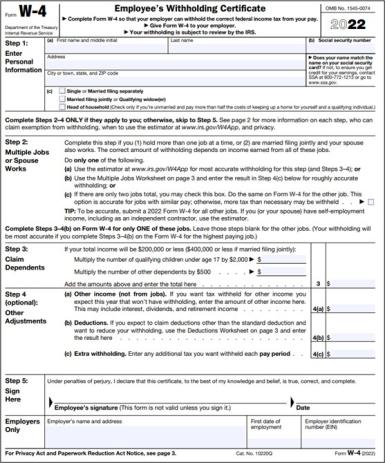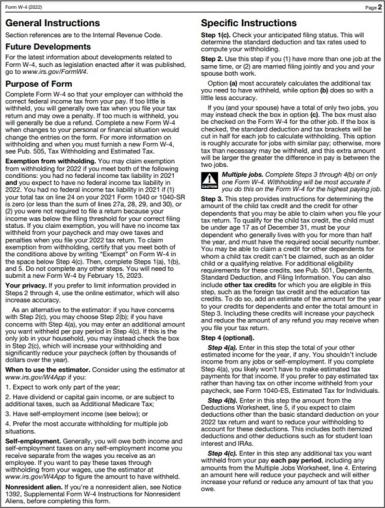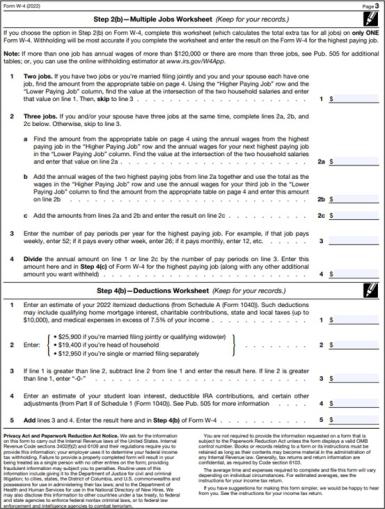Understanding Form W-4
Understanding Form W-4
When you start a new job, your employer will ask you to complete an Employee’s Withholding Certificate, or Form W-4. This form helps determine how much money is deducted from your paycheck for taxes. Your employer will then send the taxes to the IRS and your state (if applicable) on your behalf.
Be sure to take your time with this form. If you withhold too little, you'll face a tax bill when you file your return, and perhaps have to pay a penalty. If you withhold too much, you'll receive a refund, but in the meantime, you're granting the IRS an interest-free loan.
Also realize you always have the option to update your W-4 if your circumstances change; for example, if you get married, have a baby, or perhaps even if you buy a house.
Step 1: Personal information
Fill in your name, address, Social Security number, and tax filing status.
Next, fill out Steps 2-4 if they apply. If they don’t apply to you, skip to Step 5.
Step 2: Report multiple jobs
If you have more than one job or if you are married filing jointly and your spouse works, you can fine tune your withholding using either the online estimator or the Multiple Jobs Worksheet on page 3 of the W-4.
Step 3: Claim dependents
If you have children or other dependents and earn less than $200,000 (or $400,000 filing jointly) indicate that here to lower your withholding accordingly.
Step 4: Further adjustments
If you want additional tax withheld from other income you expect to receive or plan to claim deductions other than the standard deduction, you can indicate that here.
Step 5: Sign and date
Once everything is complete, give the signed form to your employer, who will process it. Keep a copy for your records so that you can easily refer to it at a later date.
Source: https://www.irs.gov/pub/irs-pdf/fw4.pdf
Understanding Form W-4
-
-
LATEST RESEARCHMore education is needed—especially among young investors.
Our latest survey revealed that Black and white stock market participation is at historic lows.
View survey results >
For illustrative purposes only.


